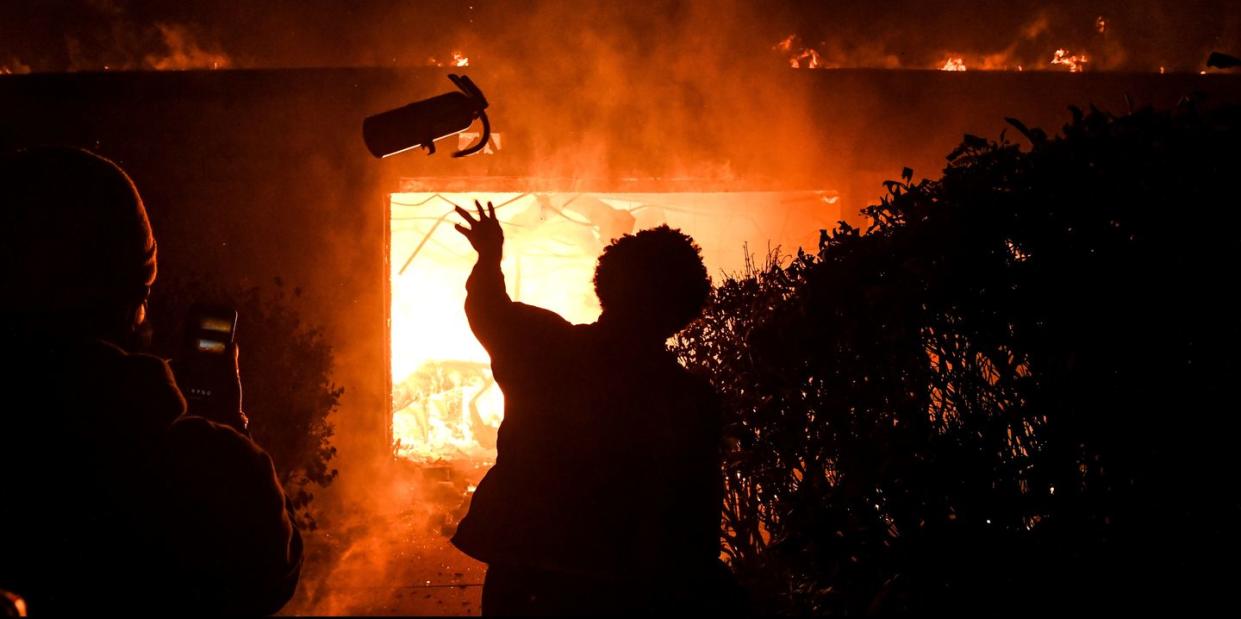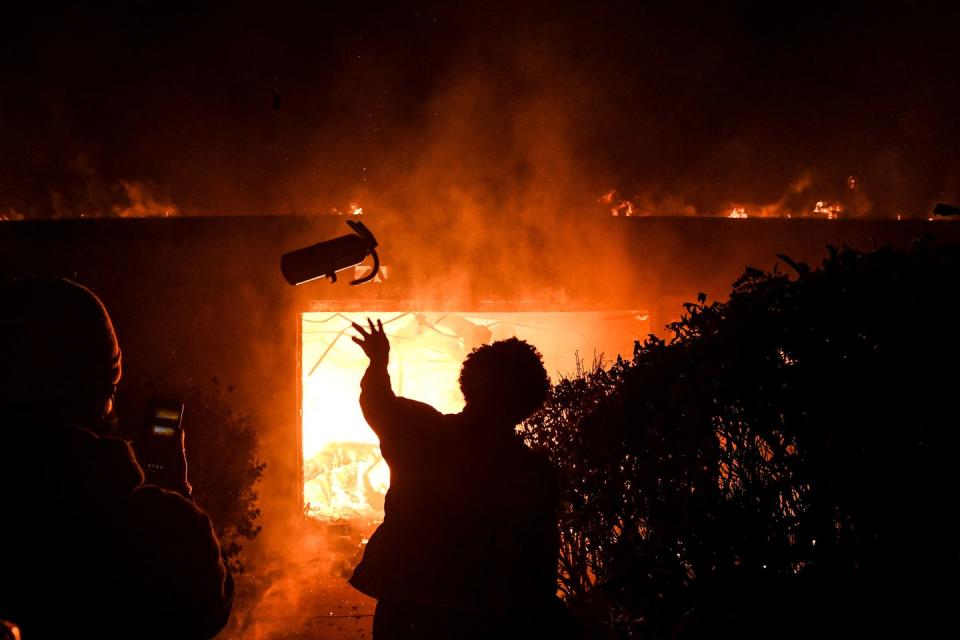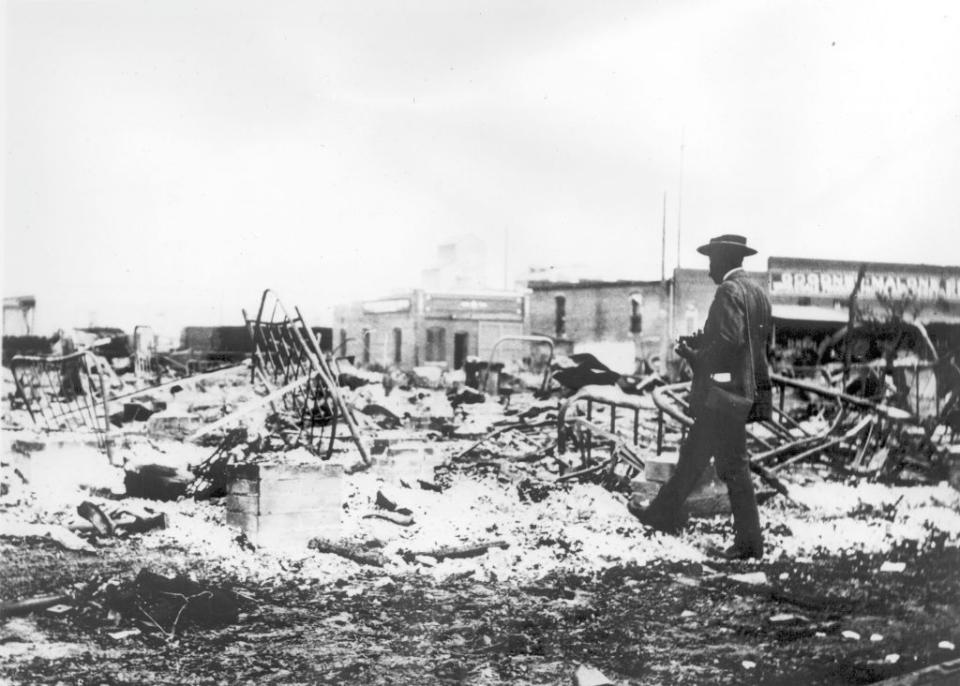A Very Abbreviated History of the Destruction of Black Neighborhoods


On May 13, 1985, police fired tear gas, water cannons, and 10,000 rounds of ammunition into 6221 Osage Avenue in West Philadelphia. Then, from a helicopter, officers dropped onto the building a satchel bomb, the kind used in World War II and Vietnam. Inside the home were seven adults and six children, members of the eco-minded black liberation group, MOVE. Only two people survived. One of the five children who burned was 12-year-old Little Phil Africa. Seven years earlier, his three-week-old brother was killed after being knocked out of his mother’s arms and crushed during an altercation with police. After the bombing, a fire broke out that claimed 61 surrounding buildings and left 250 people homeless in the middle-class black neighborhood. The houses built to replace them were “tissue paper” shoddy, and the contractors tasked with replacing them served jail time for misusing the rebuilding fund. By the mid 2010s, more than half of the rebuilt homes sat boarded up, purchased by the city for $150,000 each.
From the 1920s to the 1970s, chemical companies made polychlorinated biphenyls, or PCBs, in Anniston, Alabama. The compounds were used as lubricants and insulators in electrical machinery. They also cause cancer and damage brain structures in humans, and were banned in the U.S. in 1979. But by then, more than 800 tons of PCBs had been released into a local canal, 32,000 tons more into the city’s open landfill. Within the majority black city, black neighborhoods were hardest hit by the pollutants. Today, creeks still run red, and there are “dead zones” where vegetation cannot grow. Even young people contend with cancer and other illnesses—the brother of one local activist died of lung and brain cancer at just 16. In 2003, residents won a lawsuit against Monsanto worth hundreds of millions, but each of the more than 18,000 complainants only received a few thousand. Adults, saddled with homes they could not sell, were awarded $9,000 each, while children contending with the possibility of a lifetime of intellectual disabilities and health struggles were given just $2,000. Some of the funds created a clinic to treat the still-suffering Anniston residents. It ran out of money and folded in 2017.

In 1921, white mobs descended on Tulsa, Oklahoma’s prosperous Greenwood neighborhood. They murdered more than 300 black residents, and burned homes, shops, and local institutions ranging from schools to movie theaters. Entire city blocks evaporated, as well as the contemporary equivalent of tens of millions of dollars in black property and wealth. Nine thousand out of a total of 11,000 Greenwood residents were left homeless. After living in a black community so affluent that it had been dubbed “Black Wall Street,” thousands spent the following winter living in tents in an internment camp.
In November 1898, a white supremacist mob stormed the majority black and racially integrated city of Wilmington, North Carolina, and burned the office of a black newspaper. They marauded through the streets, killing as many as 100 black residents. The mayhem was all part of a carefully planned effort to overthrow the local government, which included black aldermen and other officials and civil servants. It still stands as the only successful coup in American history. Black residents retreated into swamps and woods on the outskirts of town to escape the white mob. Around 2,000 left for good, leaving the city majority white.
In 1855, New York’s Seneca Village was a largely-black settlement with around 225 members. The Upper Manhattan community included an economic mix of people who lived in everything from shanties to two-story homes. They owned livestock, and were shielded from the racism in more developed parts of the city. Some black people owned property, which afforded them the right to vote: 10 of the 100 eligible black voters in the entire state in 1845 were residents of Seneca Village. By 1857, the community was gone, its land acquired through eminent domain to create Central Park.

These are anecdotes of literal, physical destruction of black communities, but while the carnage can be as unmistakable as bombs falling from the sky, it more often takes the form of slower-burning ravages wrought by economic starvation, over policing, educational deprivation, and mass incarceration. American history is littered with the destruction of black communities.
A multiracial group of protestors have taken to the streets across America in the wake of George Floyd’s murder. And yet they are accused of being black people destroying their own communities, just as black people were condemned for Watts in 1965, Chicago and other cities after Dr. Martin Luther King’s murder in 1968, and Los Angeles in 1992. Aside from the horrifying way that white America seems to be more scandalized by the destruction of stores and police stations than the destruction of lives, the insincerity of this newfound concern for black neighborhoods is obvious. It only ever seems to be activated when a black person picks up a brick. Black neighborhoods have been bulldozed and bombed, burned to the ground and made toxic to those who live in them. If you don’t care about that more than you care about a Target, you don’t care at all.
You Might Also Like


